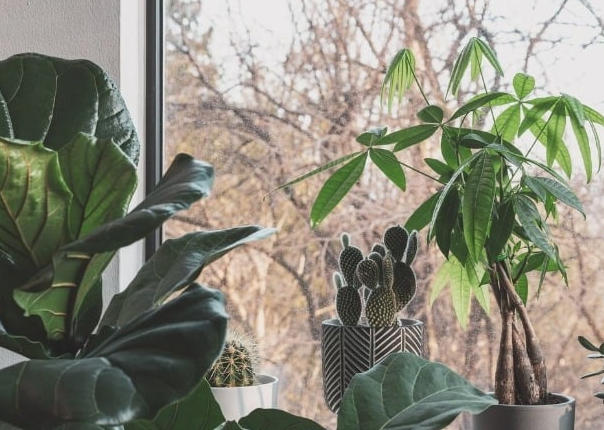In autumn, houseplants need special care
In the fall season, house plants require different care than in other seasons, so you should try to change your care style and gain more knowledge about this, but how should they be cared for?
Water less:
Watering should be gradually reduced so that the plant can adapt to the autumn season. This makes it easier for the plant to enter rest.
In the winter, most plants do not need a lot of water, so overwatering is more likely during this period. In autumn, be careful not to overwater the plant. You should water the plant when the soil is a little drier than usual.

Light up the plant:
It is very important to move plants to a place where they receive more sunlight as the days get shorter. Plants receive more natural light if they are placed next to southern or sunny windows. You can place the plant next to a fully sunny window if you don’t have these windows in your home.
Fertilize no longer:
It is not advisable to fertilize the plant while it is preparing for winter. Fertilizer shouldn’t be abruptly cut off in the autumn season, but rather gradually reduced and then stopped. There are some plants that are more sensitive than others.
For sensitive plants, it is recommended to stop fertilizing gradually, so they will not be shocked by the change of season, but when the weather gets colder at the end of summer, halve the amount of fertilizer.
Indoors, bring the plant:
Early autumn is the best time to bring the plant indoors so that the weather is not too cold. Long-term exposure to the cold outdoors destroys plants and increases their risk of freezing. Bring them indoors before the temperature drops below 60 degrees Fahrenheit.
Keep an eye out for insects:
In the autumn, many insects come and go inside the house, and you plan to bring the plant inside during this time. Therefore, you need to keep an eye out for insects and take better care of plants. You should get rid of insects as soon as possible to prevent damage to the plant. One of the suitable oils for keeping insects away from plants is neem oil.
Keep the plant out of cold rooms:
In autumn, make sure the house’s temperature is comfortable before bringing the plant inside. Temperatures between 60 and 75 degrees Fahrenheit are ideal for keeping plants healthy. Make sure you don’t place the plants in a room that is too cold or too hot.
If the pot needs to be changed, do so only if necessary:
Pots should not be changed during the fall season. It is better not to change the pot before the rest period, but if you feel that the soil is dry and the plant is having problems, then you can change the pot. Otherwise, don’t do it if you don’t have to.
Put more moisture into the air:
As autumn is a drier season and the weather is colder, be careful not to damage the plant. When the tips of the leaves of the plant brown, it is because it is exposed to dryness, so you can use humidifiers to bring moisture into the house.
The dead parts of the plant should be removed:
Pruning in winter is not recommended because it stimulates the plant’s growth and makes it dormant, but you can remove dead leaves and wilted flowers and discard the damaged parts.
